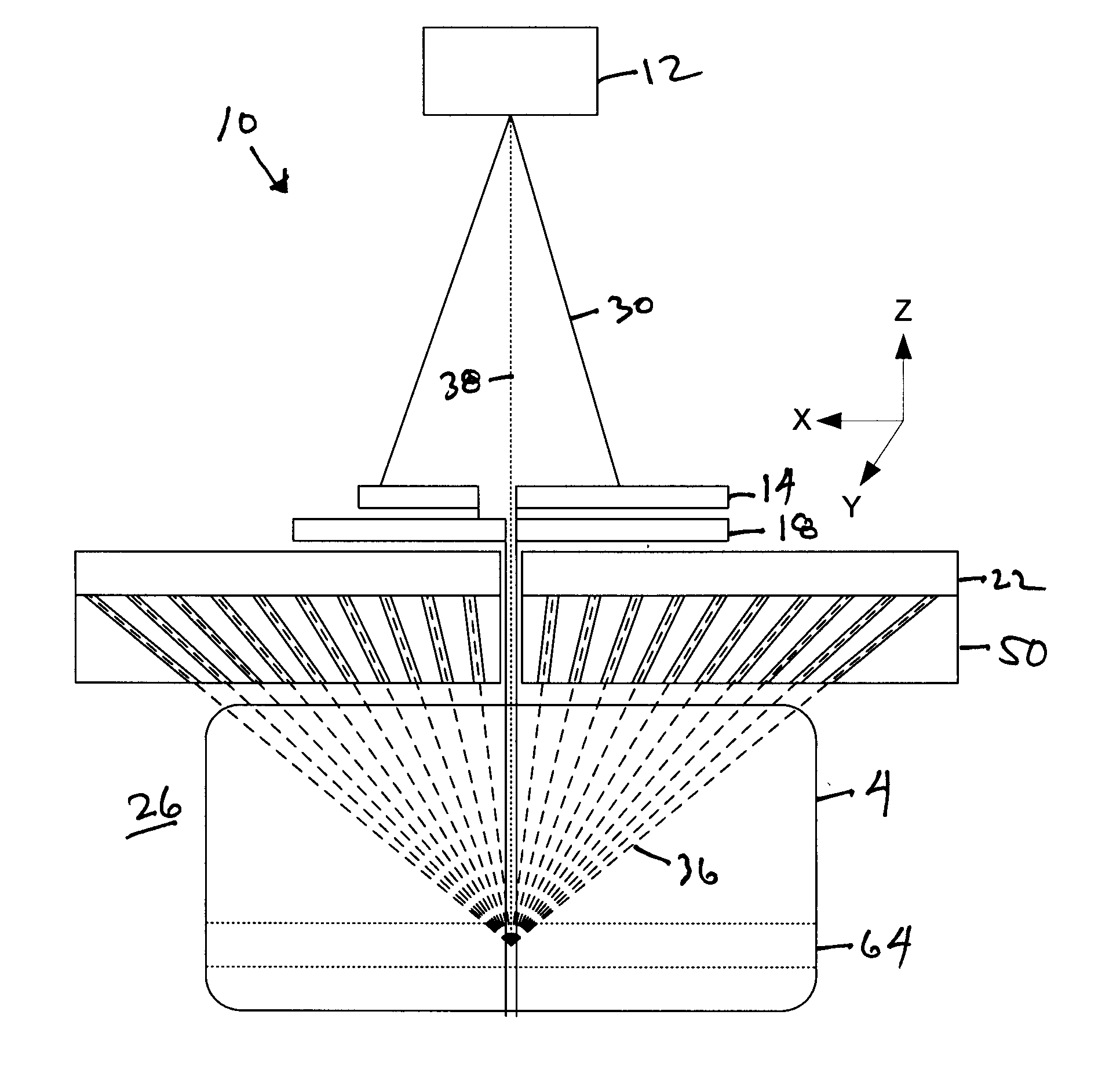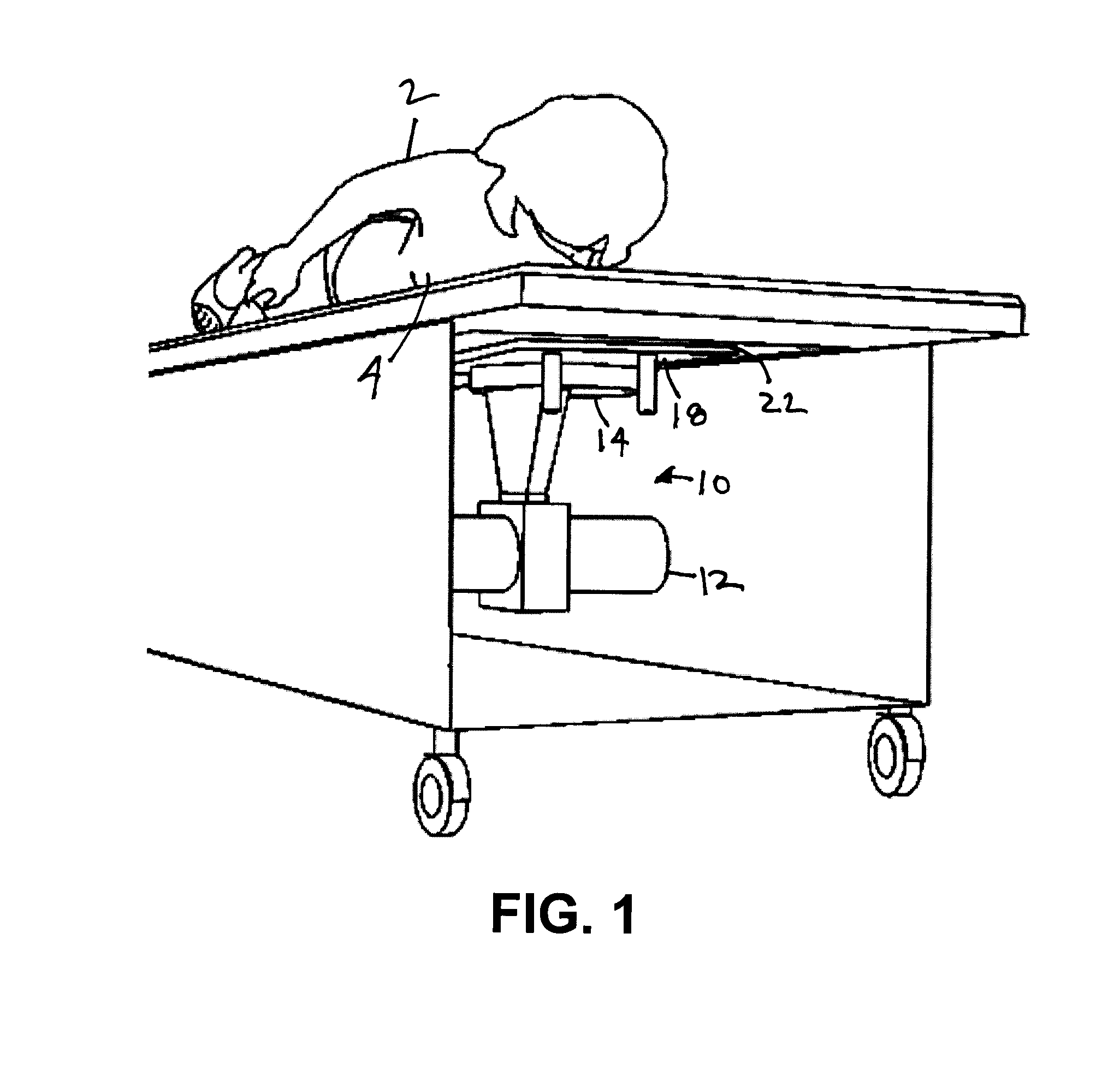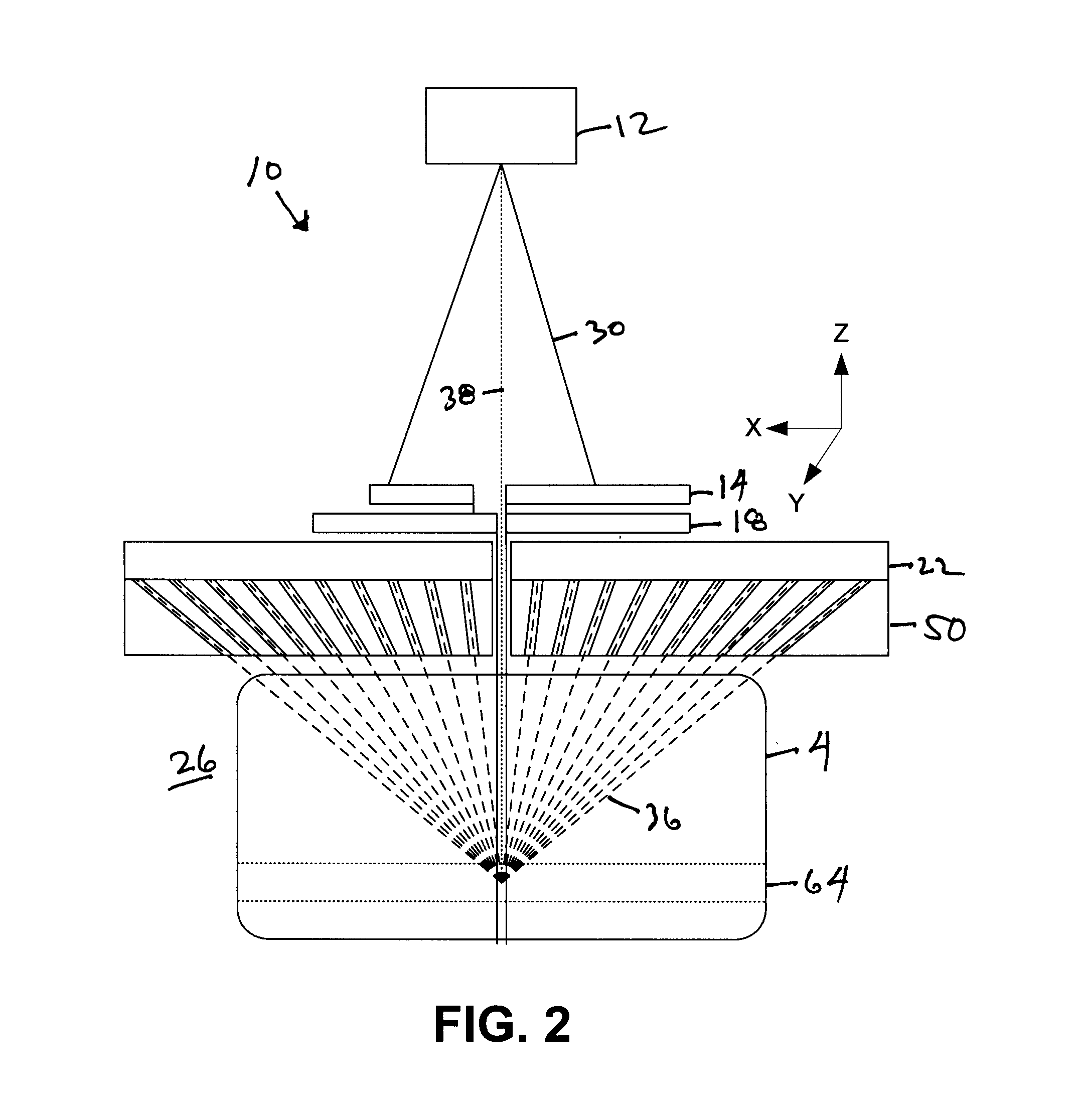Low-dose x-ray backscatter system for three dimensional medical imaging using a conventional x-ray tube
a low-dose, x-ray technology, applied in the field of x-ray imaging, can solve the problems of loss of contrast and spatial resolution, system operation at very low exposure level, and spatial resolution of transmission x-ray system scattering of primary beam as it penetrates the breas
- Summary
- Abstract
- Description
- Claims
- Application Information
AI Technical Summary
Benefits of technology
Problems solved by technology
Method used
Image
Examples
Embodiment Construction
[0024]The present application hereby incorporates by reference in its entirety U.S. Provisional Patent Application No. 61 / 125,530, on which this application is based.
[0025]U.S. Pat. No. 7,620,150, issued to the present inventor and entitled X-ray Backscatter System for Imaging at Shallow Depths, discloses a method of producing images using a backscatter system and is incorporated herein by reference. U.S. Pat. No. 8,094,782, issued to the present inventor and entitled X-ray Backscatter System for Imaging Soft Tissue Regions, also discloses a method of producing images using a backscatter system and is incorporated herein by reference.
[0026]The method of the current invention is an improved version of the '782 patent and differs from the '782 patent in several ways. The '782 patent uses backscatter x-rays of the object to produce 2D images of the cancer lesion and the normal tissue simultaneously, while the current invention employs a focusing collimator that allows separate 3D imagi...
PUM
| Property | Measurement | Unit |
|---|---|---|
| distance | aaaaa | aaaaa |
| distance | aaaaa | aaaaa |
| distance | aaaaa | aaaaa |
Abstract
Description
Claims
Application Information
 Login to View More
Login to View More - R&D
- Intellectual Property
- Life Sciences
- Materials
- Tech Scout
- Unparalleled Data Quality
- Higher Quality Content
- 60% Fewer Hallucinations
Browse by: Latest US Patents, China's latest patents, Technical Efficacy Thesaurus, Application Domain, Technology Topic, Popular Technical Reports.
© 2025 PatSnap. All rights reserved.Legal|Privacy policy|Modern Slavery Act Transparency Statement|Sitemap|About US| Contact US: help@patsnap.com



